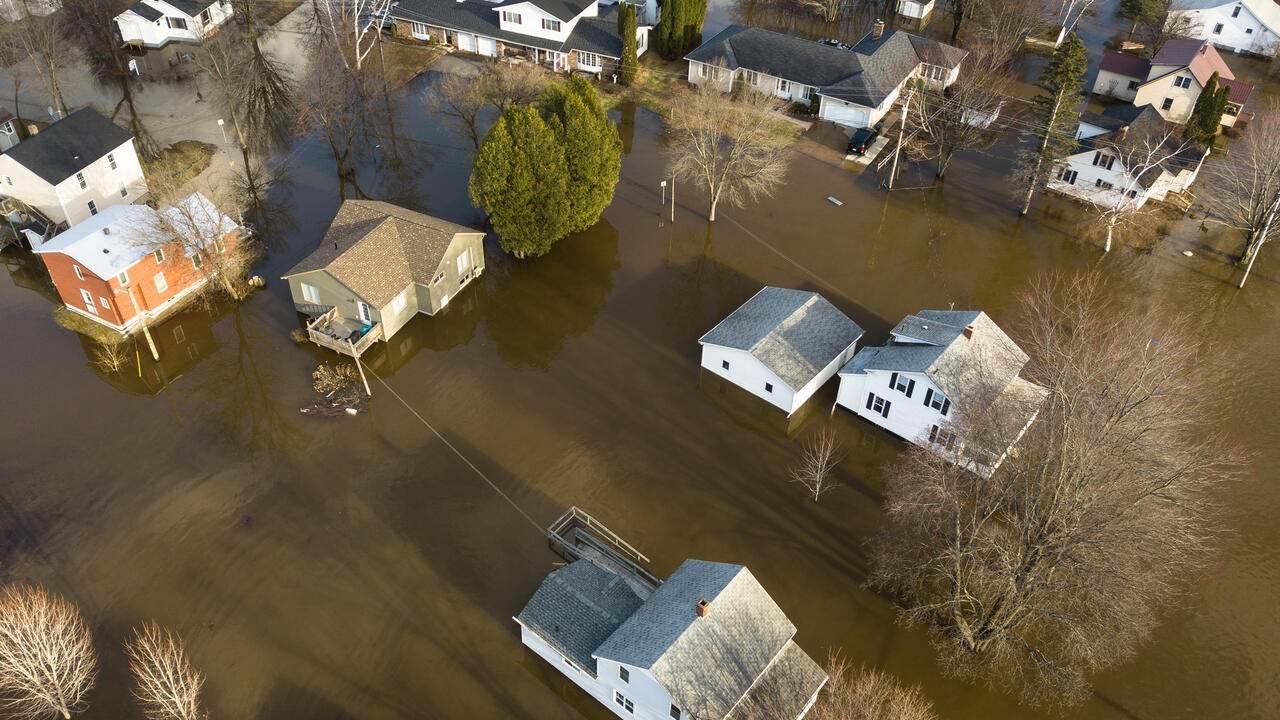
Vulnerable communities face a higher risk of socio-economic injustice due to flood hazards
Traditionally-recognized socially vulnerable groups in Canada bear a disproportionate burden of flood risks

Traditionally-recognized socially vulnerable groups in Canada bear a disproportionate burden of flood risks
By Media RelationsSocially vulnerable groups are at greater risk from climate-change-caused flooding because of systemic disadvantages, according to a new study.
The study also reveals that neighbourhood-level racial or ethnic, economic, social, and demographic factors play a significant explanatory role in the distribution of flood risk across Canadian neighbourhoods.
The study led by Liton Chakraborty, a researcher at the University of Waterloo's Partners for Action, in collaboration with other Waterloo researchers, found that traditionally-recognized socially vulnerable groups in Canada, such as females, persons living alone, Indigenous, South Asians, the elderly (age 65 and over), other visible minorities, and economically insecure residents bear a disproportionate burden of inland and coastal flood risks.
"This research fills the gap of analyzing and addressing flood-related socio-economic discriminations while considering divisibility aspects of flood hazards and contributes to the emergent and quantitative environmental justice literature on flood-related socio-economic disparities," Chakraborty said.
The study utilized national datasets of flood hazards, residential address points, census of population, and census tract (CT)-level cartographic boundaries to determine flood vulnerable neighbourhoods and the number of residential properties exposed to river, periodic rainfalls, and coastal flooding across 4,458 CTs in Canada.
By examining whether the types of flood hazard zones influence the observed relationships among flood exposure and racial, ethnic, and other socio-demographic characteristics of Canadian residents, the study indicates that the statistical associations between periodic rainfalls-related flood risk exposure and the proportion of Black, Indigenous and other visible minority populations are positive and significant.
"Our research shows how the spatially varying distribution of flood hazards and socio-economic deprivation, or social vulnerability indicators could inform Canada's equitable flood management approach that complements Federal Government's Gender-based Analysis Plus priorities in flood-related disaster and emergency management policies across Canada," Chakraborty said. "Therefore, the paper's findings promote a socially just flood risk management approach emphasizing the need to acknowledge socio-economic heterogeneity within various racial, ethnic, and socio-demographic groups."
The researchers suggest that policymakers must consider the uneven distribution of racial or ethnic and socio-demographic covariates in designing flood risk management strategies that optimize scarce resource allocation.
The study, authored by Waterloo researchers Chakraborty, Horatiu Rus, Daniel Henstra, Jason Thistlethwaite, Andrea Minano, and Daniel Scott, was recently published in the Environmental Research journal.

Read more
Here are the people and events behind some of this year’s most compelling Waterloo stories

Read more
Waterloo researchers are helping to make a much-loved holiday tradition more sustainable all year round

Read more
Researchers awarded funding to investigate ecology, climate change, repatriation, health and well-being through cultural and historical lens
The University of Waterloo acknowledges that much of our work takes place on the traditional territory of the Neutral, Anishinaabeg, and Haudenosaunee peoples. Our main campus is situated on the Haldimand Tract, the land granted to the Six Nations that includes six miles on each side of the Grand River. Our active work toward reconciliation takes place across our campuses through research, learning, teaching, and community building, and is co-ordinated within the Office of Indigenous Relations.